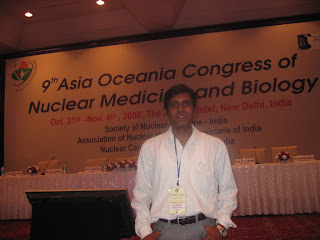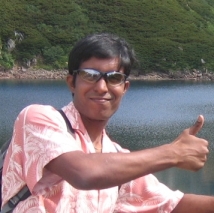

I attended the 56th Annual meeting of Society of Nuclear Medicine (SNM) held from 13th to 17th June 2009 at Toronto, Canada. The conference venue was Metro Toronto Convention centre located in the downtown Toronto, just adjacent to Toronto’s Union station.
This was my first time to attend the SNM meeting and was quite awed at the enormity of the meeting organization, attendee’s number and breadth of research covered. The meeting was well organized into various sessions, with each sessions further divided into multiple tracks. Different aspects of research on nuclear medicine and molecular imaging were well covered with multiple sessions running parallel in same time. The number of attendees likely crossed more than 3000.
The first day began with categorical seminars on various topics delivered by experts in the respective fields. I attended few seminars in the morning session of “Critical evaluation of molecular imaging in Neuropsychiatry” where in current advances in schizophrenia imaging and gene effects on psychiatric disorders were discussed. Later I attended the “Molecular Imaging of Hypoxia biology” where in a good background and up-to-date information on tracers for hypoxia imaging in tumors was presented. The discussion following Prof. Fujibayashi’s presentation on Cu-ATSM PET for stem cell imaging was one of the highlight of the session.
The formal opening of the meeting was on next day with a plenary session of Henry N. Wagner Jr Lectureship presented by Dr. John F. Valliant. The presentation gave an overview of multidisciplinary imaging approach using various molecular imaging probes with a focus on breast cancer. The importance of dedicated organ/disease specific cameras such as for imaging breast cancer was mentioned. However, the PET probe mentioned was the FES which is now well established in clinic for breast cancer imaging. Recent interest in multimodal nanoparticle probes was discussed. Examples of SPECT-MRI probes such as 111In-MEIO nanoparticles or SPECT-optical such as 99Tc-chelate with optical tag or SPECT-ultrasound such as 99Tc-chelate with microbubble were mentioned. He also stressed on the application of new chemical labeling strategies which can replace a radiolabeled prosthetic group with a fluorophore such as using single amino acid chelates (SAAC).
The next day’s Cassen lectureship was given by Dr. David Townsend, one of the key inventors of PET/CT scanner. He elaborated on the evolution of today’s PET/CT scanner. It was interesting to note a slide where in he mentioned that one of the first works on PET/CT came from a group in Gunma University in Japan as early as 1984. However, it was not publicized well. The prototype PET/CT machine was developed in 1998 and since then it has evolved rapidly in the PET world market. He also gave a brief overview of current status of PET-MRI machine.
My presentation on “Intratumoral distribution of Cu-ATSM and FDG in lung cancer” was scheduled on the same day in the afternoon session. The presentation was in a session that focused on Lung in Oncology-Clinical diagnosis track. During the discussion period, a question was asked about the absence of Cu-ATSM accumulation in any of the tumors. Although I was lacking sufficient clinical experience to answer that question, I replied that at least in our cohort of patients we did not come across any such case. The questioner further wanted to know if it is possible to make any cut-off value to distinguish the Cu-ATSM accumulation among pathohistologically different patients for which I replied that more patient studies are required.













